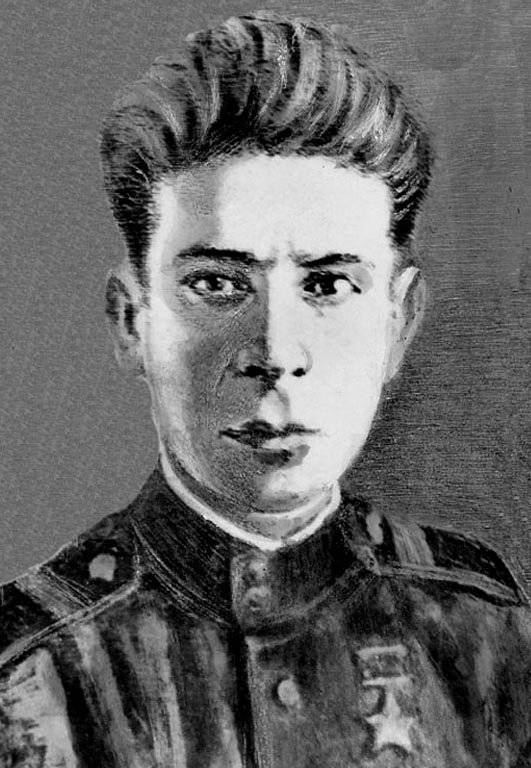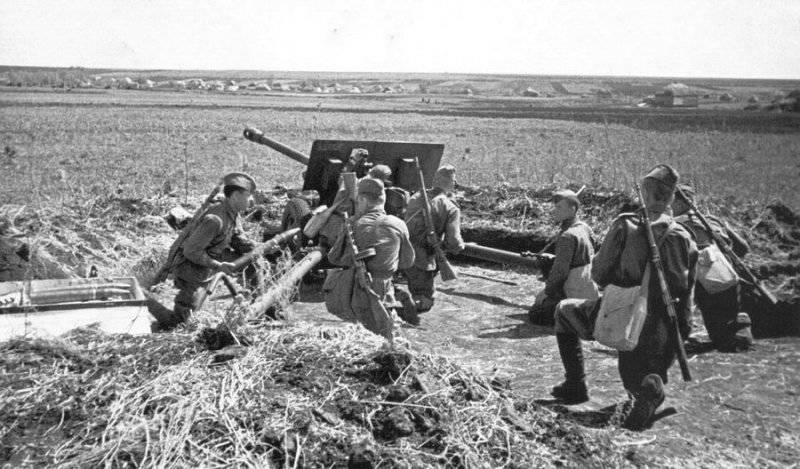Hero of the Soviet Union Suren Kasparyan
Suren Akopovich Kasparyan was born on August 15 on August 1924 in the small village of Kilizhbakh, located in the Stepanakert district of Nagorno-Karabakh (currently the NKR Askenary region), in an ordinary peasant family. In early childhood, his family moved to a permanent place of residence in the capital of Uzbekistan - Tashkent. It was in Tashkent in 1940 that Kasparyan graduated from high school on the basis of 7 classes. After completion of training, he gets a job at the Tashkent Shoe Factory them. Maxim Gorky, where he works as a turner.
However, the war that broke out soon intervened in peaceful life, and his turner's career in Tashkent had to be exchanged for boots and overcoat. In December, 1942, upon reaching the 18 age, Suren Kasparyan was drafted into the Red Army, and fate determined him for artillery. In 1943, Kasparyan graduated from the regimental school of artillery gunners. Upon completion of school, he received the rank of sergeant and in October of the same year he joined the active army. A young guard sergeant began his front-line career in the 86 Guards Separate Anti-Tank Fighter Division of the 82 Guards Rifle Division, being a gunner. This division was part of the 8-th Guards Army, commanded by renowned Soviet military leader Vasily Chuykov.

Suren Kasparyan took part in battles with the Nazis as part of the 1st Belorussian and 3rd Ukrainian fronts. He particularly distinguished himself in the battle on the territory of Poland on August 20, 1944 at the Magnushevsky bridgehead, which the Nazis did their best to eliminate. They made serious counterattacks on the bridgehead. In order to stop the advance of the Soviet troops, the Nazis used infantry and tank units, in the battle on August 20 they used up to 40 medium and heavy tanks.
Magnushevsky bridgehead was located on 60 kilometers south of Warsaw. And it was one of the bridgeheads that the Soviet troops were able to capture on the left bank of the Vistula in August 1944. The bridgehead near the town of Magnushev was captured by Soviet troops at the final stage of the Lublin-Brest offensive operation. The bridgehead was soon able to expand to 44 kilometers along the front and to 15 kilometers in depth.
The sergeant Kasparyan’s award list described the feat he had accomplished. By connecting the infantry and 40 medium and heavy tanks, the Nazis launched a counter attack on the bridgehead. It so happened that 19 enemy tanks immediately attacked the firing position of Sergeant Suren Kasparyan's gun. However, the gunner did not flinch and boldly entered into this unequal battle with the armored armada. The first shot he managed to set fire to an enemy tank. This success inspired the sergeant, and he boldly continued to conduct an artillery duel. Despite strong artillery and machine-gun fire, Kasparyan for several minutes, one after the other, hit another 4 German tank. His award list states that these were heavy Tiger tanks. As a result, the German offensive was thwarted, other tanks retreated.
At the same time, in the course of the battle, one of the enemy’s tanks destroyed the gun of sergeant Kasparyan with several volleys, and the gunner himself was seriously wounded. However, even being wounded, he refused to leave the battlefield. Kasparyan did it only after the order of the commander was transferred to the rear. By his unprecedented feat he managed to inspire his comrades and advancing infantrymen, who, having advanced, ensured the expansion of the bridgehead on the left bank of the Vistula. For courage and courage, which Suren Kasparian showed in this August fight, by the Decree of the Presidium of the USSR Supreme Council of November 18 1944, he was presented to the highest award - the title of Hero of the Soviet Union with the award of the Order of Lenin. He was also awarded the Order of the Patriotic War 1 degree and various medals.
After the end of the war, Suren Kasparyan served in the Soviet Army for some time, and then demobilized. In 1947, he returns to his native Tashkent, where he lived and worked until 1951. This year, he was again called into the Soviet Army to undergo mandatory military training. The command sent Kasparyan to the Rostov Artillery School, where special courses were organized. In the 1952 year after a regular business trip, he graduated with honors from the courses of lieutenants organized at the Frunze Odessa Artillery School.
After graduating from the courses, Kasparyan received his first officer's rank. In 1956, he was transferred to the reserve, having reached the captain by this point. After being fired from the ranks of the armed forces, Suren Kasparian returned to Tashkent, where he worked for some time as a master in a sewing studio named after V. I. Lenin, and then moved to Armenia in Yerevan. In Yerevan, he gets a job at the YerAZ automobile plant. The hero of World War II, 3, January 1994, died (according to other information, in 1997, year).
Based on materials from open sources.

Information